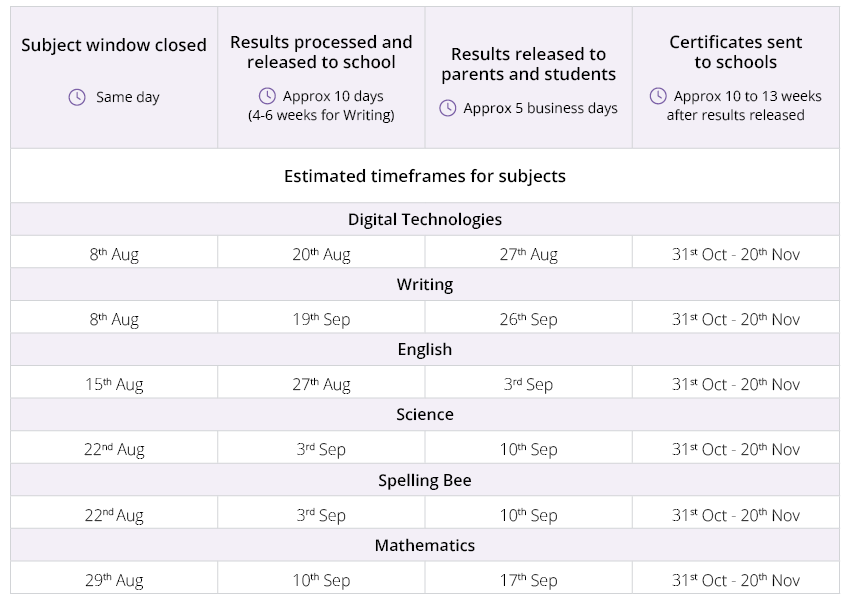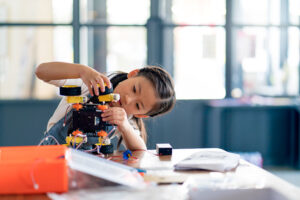ICAS results: our process and timeframes
- Categories Blog
- Date August 21, 2023

If your child has participated in ICAS this year, we know how eager you must be to access their results.
In this blog, we explore what needs to happen for ICAS results to reach you each year, including average wait times so that you know when to expect them.
Here’s the process:
1. Our Analysis and Reporting team process the results
When: Approximately 10 days (or 4-6 weeks for Writing) after the final sitting day for each subject.
When the sitting window is complete for each subject, our system automatically marks the assessments. In addition, our Analysis and Reporting team complete a series of important checks to ensure the integrity of the results. Once the reports are created from this data, we then re-check them.
There are hundreds of thousands of tests to go through every year, so as you can imagine, this takes time: usually around 10 business days after the final sitting day for each subject. The exception is our Writing tests, which are all manually graded by teachers and then validated against each other. This takes around 4-6 weeks.
2. We release the results to your child’s school
When: immediately after results have been processed.
When the results are available for each subject, we email your child’s school to let them know. Your school can then access student results online via the Results Portal.
3. We release the results to parents and students
When: 5 business days after the results are released to schools.
If you registered for ICAS through the parent payment system (PPS), we will email you when your child’s results are ready to view online via the Results Portal. We will include your child’s TAP-ID and PIN in this email so that you can access their results easily and quickly.
If you can’t find this email, or you didn’t participate via a PPS school, you can still access your results online with your TAP-ID and PIN, which you can get in the following ways:
- Find your TAP-ID and PIN on the back of a previous year’s ICAS certificate. Note, your child’s TAP-ID and PIN could have changed if they’ve moved schools.
- You can request your TAP-ID and PIN using this form. We aim to respond to your request within 10 business days.
4. We print ICAS certificates and send them to schools
When: Approximately 10 to 13 weeks after results are released.
After all sitting windows have closed and results are finalised for all subjects, we print the certificates, quality-check them, and then mail all certificates to schools in a single delivery. This takes between 10 to 13 weeks – there are lots of certificates and schools to get through.
At the same time, we also analyse the top results for students to identify medal winners for the year. We then request the medals from our manufacturer. Once received, we individually mail them to schools.
5. Your child receives their ICAS certificate and printed results
When: At your school’s discretion.
When schools receive the ICAS certificates which have the results printed on the back, they organise them and hand them out to students, typically in celebratory assemblies (which is wonderful!). This can take some time to plan, and as hardworking people, they will appreciate your patience with this.
For medal-winning students, schools may choose to contact parents individually. These are usually handed out in the same assembly as the certificates.
Important note: While we do our best to achieve these timings, there may be some unforeseen delays that can impact the release of results, TAP-IDs, PINS, certificates or medals. In this instance, we kindly ask for your patience, and will keep schools and parents informed via email.
That’s an overview of our process! We hope it has given you an idea of what goes on behind the scenes to deliver your child’s ICAS results.
If you’d like the essentials of when you can expect to access your child’s ICAS results, we explain this in the graphic below.

Tag:ICAS, icas results
You may also like

5 practical tips on how to be successful at ICAS Writing

5 proven tips for getting a great result for ICAS Science

